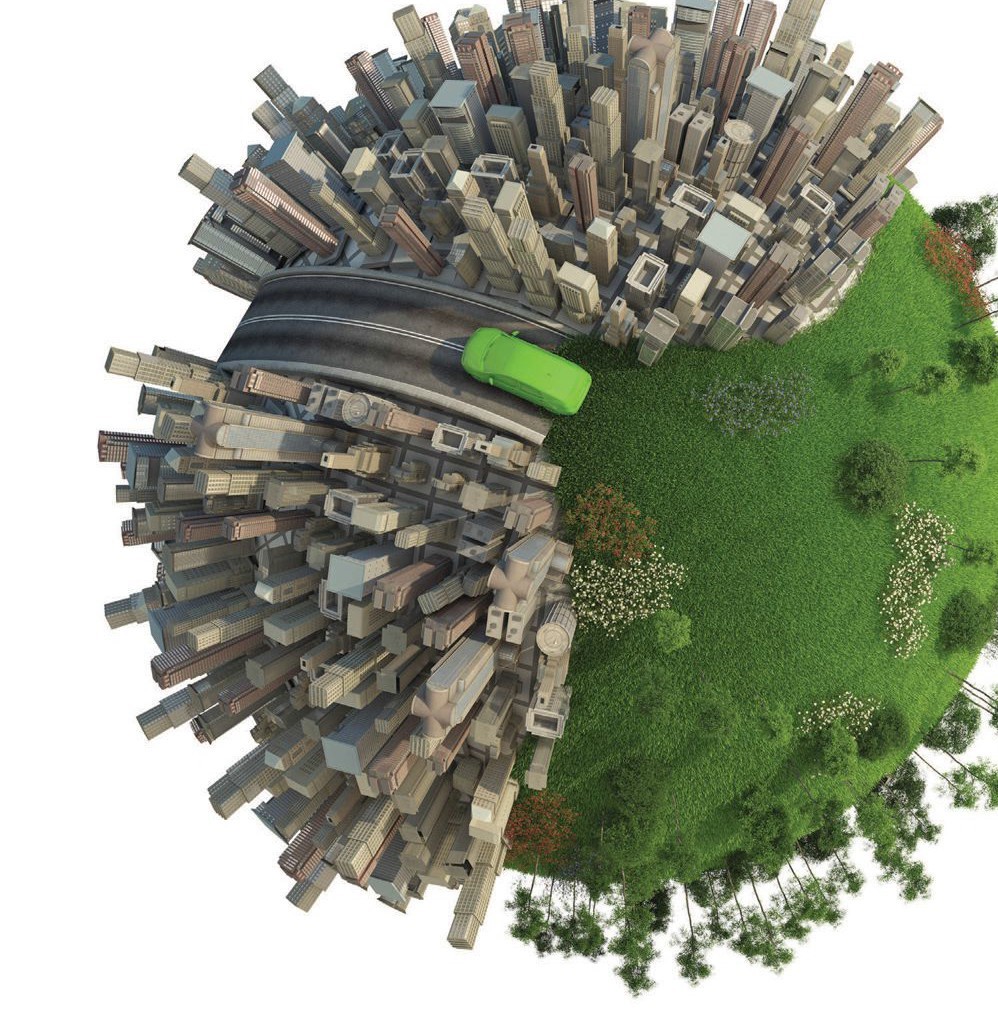Tribology and a sustainable ecology
Dr. Ali Erdemir | TLT President's Report October 2016
Slowing climate change will take a worldwide and multidisciplined effort. Here’s how our science is helping.

Even minor improvements in the friction and wear of machine components can save enormous amounts of energy, reduce emissions and increase reliability.
© Can Stock Photo Inc. / arquiplay77
ECOLOGICALLY, WE LIVE IN A VERY DIVERSE YET DELICATE PLANET where life has existed for millions of years. For all these years, our planet has been very generous to its residents, especially us, the human kind, who enjoyed the bounties of its goodness for many millennia without tipping the ecological balance.
With the start of the Industrial Revolution in the mid-1800s, however, things started to change. Increased uses of coal and other fossil fuels needed to propel our increasingly mobile and highly mechanical lifestyle came with a terrible price: emission and accumulation of CO
2 into the atmosphere that surrounds our planet. With increasing mobility, industrial activity and population growth, CO
2 emission skyrocketed in recent decades and ultimately gave rise to the much talked about climate change or disruptions of today.
So us, the human kind, is to blame for tipping the delicate balance of our ecosystem and impacting the livelihood of all living species in this planet. The big question that everyone has lately been wondering is: How can we slow down or reverse this trend and hopefully halt climate change? Under the auspices of the United Nations, world leaders have been holding high-level talks since the early 1990s to find an answer. These talks led to a major climate summit in Kyoto-Japan in 1997 and culminated in a protocol toward curbing greenhouse gas (GHG) emissions.
The most recent summit was held in Paris with the participation of nearly 200 countries and resulted in a historical agreement for more seriously dealing with GHG. One of the major cornerstones of this agreement was to keep the global mean temperature increase below 2 C above pre-industrial times and more preferably keep it at a level of 1.5 C. Considering the fact that we are already halfway there to almost 1 C above mean temperature, it will take some very dramatic measures to meet these targets.
Well, how does tribology play into all this? From the terms of the Paris treaty, it was very clear that we must develop and implement new societal and industrial practices that can save energy, protect the environment and increase renewable energy resources like wind, solar and so on. There is no question that we owe our modern lifestyle to many modern machines and vehicles with myriad moving parts. Thanks to the advanced tribological principles and very effective lubricants, these machines function incredibly well (think of the cars that we drive every day).
Yet, despite the great advances we have made so far, energy and material losses due to friction and wear in these mechanical systems still account for huge economic and environmental burdens. Approximately a third of the world’s primary energy consumption is attributed to friction; in addition, about 70% of the eventual equipment failures is blamed on wear and tear (
1). It is quite clear that even a very minor improvement in the friction and wear of machine components can ultimately save enormous amounts of energy, reduce emissions and increase reliability, all of which ultimately benefit society.
Among all known planets in our solar system and beyond, ours is the only one where life has existed for so long. The big question is: How long can we keep it that way? There is no doubt that our dependence on modern machines that propel our modern lifestyle will continue to increase in coming years. However, while embracing such an increasingly more mobile and mechanical world, we must remember to ensure that these machines are very efficient, durable and green.
Thanks to many dedicated scientists, engineers and specialists in our tribology field, we can proudly say that we are doing our part and ready to play a more proactive role in paving the way for a sustainable ecology.
1. Szeri, Andras Z., ed. (1980),
Tribology: Friction, lubrication, and wear. McGraw-Hill.
 Ali Erdemir is a Distinguished Fellow at Argonne National Laboratory in Lemont, Ill. You can reach him at erdemir@anl.gov
Ali Erdemir is a Distinguished Fellow at Argonne National Laboratory in Lemont, Ill. You can reach him at erdemir@anl.gov.